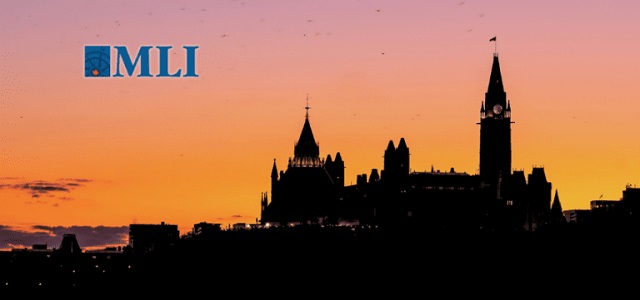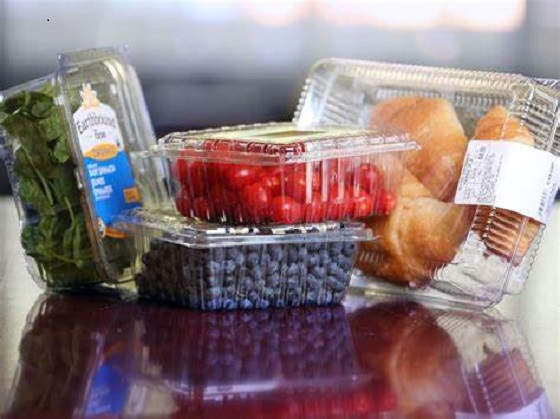Food
The Trudeau government’s latest assault on transparency is buried in Bill C-69

From the Macdonald Laurier Institute
By Aaron Wudrick for Inside Policy
The new powers granted to the minister of health under Bill C-69 are considerable. For example, they allow the minister to unilaterally make decisions regarding drug approvals and food safety regulations, effectively pulling products off the shelves of stores without the typical procedural safeguards. This concentration of power in the hands of the minister circumvents much-needed scrutiny and risks politicizing health decisions.
As the Trudeau government scrambles to pass its spring 2024 budget measures through Parliament before the summer recess, most of the media’s focus has centred on the budget’s headline measure, the increase in the capital gains inclusion rate. Unusually, Finance Minister Chrystia Freeland chose not to include that change in its main budget bill, saying she would instead soon introduce those measures in a separate bill.
Meanwhile, the remainder of the budget measures are contained in Bill C-69, an omnibus bill that has attracted little media attention. That is a shame, as it contains provisions that warrant closer scrutiny, particularly the proposed changes to the Food and Drug Act. These amendments grant the minister of health sweeping powers, exacerbating the Trudeau government’s longstanding habit of undermining proper procedural channels when it finds them to be inconvenient.
The new powers granted to the minister of health under Bill C-69 are considerable. For example, they allow the minister to unilaterally make decisions regarding drug approvals and food safety regulations, effectively pulling products off the shelves of stores without the typical procedural safeguards. This concentration of power in the hands of the minister circumvents much-needed scrutiny and risks politicizing health decisions. It is not hard to see how such authority could easily lead to arbitrary or politically motivated actions, further diminishing public trust in a health system battered by the COVID-19 pandemic.
Health Minister Mark Holland defends these new powers by arguing that they are necessary for protecting public health swiftly and effectively and suggests that only a “dishonest” minister would misuse such powers. He fails to mention that governance should not rely solely on the personal integrity of individual ministers but on robust, transparent processes that ensure accountability. It is concerning that Holland advocates bypassing established departmental procedures, which raises questions about the motivations behind these proposed changes.
A more appropriate regulatory approach would trust independent agencies, including Health Canada, to oversee the safety of health products. Establishing clear guidelines and procedures for evaluating and removing unsafe products would ensure consistency, fairness, and transparency in decision-making processes.
Unfortunately, this approach contrasts sharply with the Trudeau government’s preference for consolidating power and limiting oversight.
For instance, the Trudeau government has been criticized for its use of secret orders-in-council, which bypass public scrutiny and reduce transparency. These orders often contain sensitive decisions that the government simply prefers to keep out of the public eye.
The government has also allowed the federal access to information system to atrophy, with frequent delays and heavily redacted documents further undermining the principle of open government.
In 2017, the Trudeau government introduced changes that critics argued would limit the independence and effectiveness of the Parliamentary Budget Officer (PBO). These amendments allowed the government to control the PBO’s work plan and staffing, potentially reducing its ability to hold the government accountable. More recently, the government cut the budget of the Information Commissioner’s office, undermining the capacity of an already overwhelmed independent officer of Parliament to hold the government to account, with the commissioner herself noting that “this reduction in my budget will spell long delays for complainants who are seeking information from government institutions.”
Further examples of this troubling trend include the government’s proposal in the early days of the COVID-19 pandemic that sought to grant the government extraordinary powers to tax and spend unilaterally – without parliamentary approval – for almost two years. Later in the pandemic, the government faced significant criticism from Auditor General Karen Hogan for the lack of transparency and accountability regarding the allocation and spending of tens of billions in relief funds: “I am concerned about the lack of rigour on post-payment verifications and collection activities,” Hogan said in 2022.
Taken together, a clear pattern emerges of a government that regularly seeks to undermine transparency, limit oversight, and concentrate power within the executive branch, and Bill C-69 is just the latest attempt.
The government should back off and drop these proposed new unilateral ministerial powers. Strong regulatory oversight, coupled with transparency and accountability, won’t impair the government’s ability to regulate health products – all while safeguarding democratic principles and public trust.
Aaron Wudrick is the Director of the Domestic Policy Program at the Macdonald-Laurier Institute.
2025 Federal Election
Poilievre will cancel Mark Carney’s new Liberal packaging law and scrap the Liberal plastic ban!

From Conservative Party Communications
Conservative Leader Pierre Poilievre promised today that a new Conservative government will stop Mark Carney’s proposed Liberal food tax and scrap the existing Liberal plastic ban. Poilievre will:
- Stop proposed new labelling and packaging requirements that will raise the cost of fresh produce by as much as 34% and cost the average Canadian household an additional $400 each year.
- Scrap the Liberal plastics ban, including the ban on straws, grocery bags, food containers and cutlery, and other single-use plastics, letting consumers and businesses choose what works for them.
- Protect restaurants, grocers, and low-income Canadians from one-size-fits-all packaging rules that disproportionately affect those who can least afford it.
“After the Lost Liberal Decade, many Canadians can barely afford to put food on the table. And now Mark Carney and the Liberals want to make it even harder with a new food packaging law that will raise the price of food–again,” said Poilievre. “A new Conservative government will keep food prices down by scrapping the Liberal plastic ban and stopping Carney’s new Liberal food tax.”
After a decade of out-of-control spending and massive tax increases, families are spending $800 more on food this year than they did in 2024, and food banks had to handle a record two million visits in a single month. In Montreal, 44 percent of CEGEP students are experiencing some form of food insecurity, while places like Hawkesbury, Kingston, Toronto and Mississauga have all declared food insecurity emergencies.
And food prices are still rocketing upwards, surging by 3.2% over the last year, with no end in sight. In the last month alone, food inflation increased by 1.9 percentage points—the largest monthly jump in food prices in decades.
As if this wasn’t bad enough, Liberals have made life even more expensive and inconvenient for Canadians by banning plastics – including everything from straws to bags to food packaging. The current Liberal ban on single-use plastics will cost Canadians $1.3 billion dollars over the next decade.

Now Mark Carney wants to make it worse by adding complicated and costly new food packaging rules that will drive up the price of food even more–in effect, a new Liberal food tax. Plastic food packaging makes up 1/3 of all plastic packaging in Canada. The proposed Liberal food tax will cost the average Canadian household an additional $400 each year, waste half a million tonnes of food, decrease access to imported fruit and produce, and increase food inflation. The Chemistry Industry Association of Canada has also warned that this tax will put up to 60,000 Canadians out of work.
“The Liberals’ ideological crusade against convenience has already driven up food prices and the last thing Canadians need is Mark Carney’s new food tax added directly to your grocery bill,” said Poilievre. “The choice for Canadians is clear, a fourth Liberal term that will make food even more expensive or a new Conservative government that will axe the food tax and bring back straws, grocery bags and other items, to make life more affordable and convenient for Canadians – For a Change.”
Alberta
Made in Alberta! Province makes it easier to support local products with Buy Local program

Show your Alberta side. Buy Local. |
When the going gets tough, Albertans stick together. That’s why Alberta’s government is launching a new campaign to benefit hard-working Albertans.
Global uncertainty is threatening the livelihoods of hard-working Alberta farmers, ranchers, processors and their families. The ‘Buy Local’ campaign, recently launched by Alberta’s government, encourages consumers to eat, drink and buy local to show our unified support for the province’s agriculture and food industry.
The government’s ‘Buy Local’ campaign encourages consumers to buy products from Alberta’s hard-working farmers, ranchers and food processors that produce safe, nutritious food for Albertans, Canadians and the world.
“It’s time to let these hard-working Albertans know we have their back. Now, more than ever, we need to shop local and buy made-in-Alberta products. The next time you are grocery shopping or go out for dinner or a drink with your friends or family, support local to demonstrate your Alberta pride. We are pleased tariffs don’t impact the ag industry right now and will keep advocating for our ag industry.”
Alberta’s government supports consumer choice. We are providing tools to help folks easily identify Alberta- and Canadian-made foods and products. Choosing local products keeps Albertans’ hard-earned dollars in our province. Whether it is farm-fresh vegetables, potatoes, honey, craft beer, frozen food or our world-renowned beef, Alberta has an abundance of fresh foods produced right on our doorstep.
Quick facts
- This summer, Albertans can support local at more than 150 farmers’ markets across the province and meet the folks who make, bake and grow our food.
- In March 2023, the Alberta government launched the ‘Made in Alberta’ voluntary food and beverage labelling program to support local agriculture and food sectors.
- Through direct connections with processors, the program has created the momentum to continue expanding consumer awareness about the ‘Made in Alberta’ label to help shoppers quickly identify foods and beverages produced in our province.
- Made in Alberta product catalogue website
Related information
-

 International2 days ago
International2 days agoPope Francis has died aged 88
-

 International2 days ago
International2 days agoJD Vance was one of the last people to meet Pope Francis
-

 2025 Federal Election1 day ago
2025 Federal Election1 day agoOttawa Confirms China interfering with 2025 federal election: Beijing Seeks to Block Joe Tay’s Election
-

 2025 Federal Election16 hours ago
2025 Federal Election16 hours agoBREAKING: THE FEDERAL BRIEF THAT SHOULD SINK CARNEY
-

 International2 days ago
International2 days agoPope Francis Dies on Day after Easter
-

 COVID-191 day ago
COVID-191 day agoNearly Half of “COVID-19 Deaths” Were Not Due to COVID-19 – Scientific Reports Journal
-

 2025 Federal Election1 day ago
2025 Federal Election1 day agoHow Canada’s Mainstream Media Lost the Public Trust
-

 Business2 days ago
Business2 days agoCanada Urgently Needs A Watchdog For Government Waste






